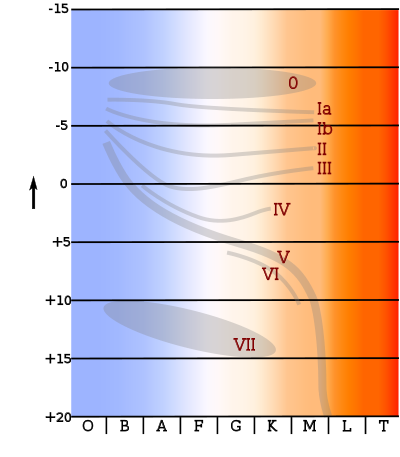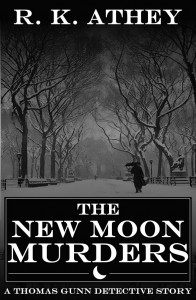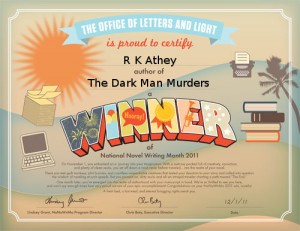Hard Lessons | The Writing Site of R K Athey
( Comments Off on Stellar Classification )
 The following article won’t mean much to anyone not interested in star classification. I’m working on a randomized star sector generator to help give setting information for my space mercenaries universe. Below are a few links I’ve created to investigate astronomy and astrophysics.
The following article won’t mean much to anyone not interested in star classification. I’m working on a randomized star sector generator to help give setting information for my space mercenaries universe. Below are a few links I’ve created to investigate astronomy and astrophysics.
Astronomers classified stars through an arcane system of letters and numbers. Most stars are classified using the letters O, B, A, F, G, K, and M. The order of the letter indicates relative temperature. O is the hottest star and M is the coolest. There are various mnemonics for remembering the order. The one I learned was “Oh Be A Fine Girl, Kiss Me”. There are others.
According to informal tradition, O stars are called “blue”, B stars are “blue-white”, A stars are “white”, F stars are “yellow-white”, G stars are “yellow”, K stars are “orange”, and M stars are “red”. Our star, Sol, is a G class star.
Stars are further classified by a Roman numeral depicting size. Type I is a super giant. Type III is a giant. Type V is a dwarf. Our Sun is a GV meaning a Yellow Dwarf star. Dwarf stars are also known as Main Sequence stars and they make up most of the stellar population.
Finally, stars have another number running from 0 to 9. 0 is the hottest and 9 is the coolest. Sol is a G2V, or a medium hot yellow dwarf.
 Below are some links I used for my stellar generator.
Below are some links I used for my stellar generator.
A nice article about Astronomy in general
http://hyperphysics.phy-astr.gsu.edu/hbase/starlog/staspe.html
Here’s a link with more about stars
http://www.nova.org/~sol/chview/chv5.htm
And finally Wikipedia – the font of all knowledge
http://en.wikipedia.org/wiki/Stellar_classification
- O 0.00003%
- B 0.125%
- A 0.625%
- F 3.03%
- G 7.5%
- K 12%
- M 76%





 by
by 
November 27, 2011 ( Comments Off on National Novel Writing Month )
 This year I decided to participate in National Novel Writing Month or NaNoWriMo as we call it. NaNoWriMo and the NaNoWriMo Young Writers Program are both run by the Office of Letters and Light, a 501(c)(3) nonprofit charity. Donations help us bring free creative writing programs for kids and adults in over 500 cities and towns, 3,000 classrooms, and 200 libraries every year.
This year I decided to participate in National Novel Writing Month or NaNoWriMo as we call it. NaNoWriMo and the NaNoWriMo Young Writers Program are both run by the Office of Letters and Light, a 501(c)(3) nonprofit charity. Donations help us bring free creative writing programs for kids and adults in over 500 cities and towns, 3,000 classrooms, and 200 libraries every year.
Writing 50,000 words in a month is a difficult chore. I’ve had the idea for a sequel to The New Moon Murders running around in my head for a while and decided to commit it electronic paper and ink during November. It was an interesting challenge and I’m almost done, having only half a chapter to go. While my effort on The Dark Man Murders is almost complete for NaNoWriMo, my work on it is far from over.
Writing is like building a house. First you lay the foundation with an idea. That takes a while to set. Then you frame it with an outline. Once you’re sure where the walls are going, you start wiring the plot and plumbing the subplots. These you wall over with scene descriptions and dialog.
The self editing phase I’m about to embark upon adds fixtures and trim. While you can sit in a house without trim and fixtures, you have to look at a bunch of holes in the wall where lights should be and you have no way to turn on the water. You don’t see the plot, subplots, witty dialog, or anything else. All you can see are the holes. A writer must read the his/her story again and again adding bits here and there to make it better and fill in the holes. The problem is, at some point you stop seeing the words an only see the story.
That’s when you harass your friends to read and comment on your story. Unless they’re very good at grammar and spelling, they won’t find all the problems. So then you bring in an editor to show you where all the flaws are. You’d be surprised at how many they find. But even they won’t find everything. So then you need a proof reader but even then you aren’t done. No matter how many people read your new story (which at this point is about a year old) the buyer is going to see flaws.
So here I sit after a one month effort spent in Nation Novel Writing Month. My house has a foundation, walls, plumbing, and wiring but it is, in a sense, unreadable. Better said, it won’t be enjoyed by the readers because of all the holes in the sheet rock and a lack of counters, shelving, and sinks. Heaven forbid if the reader should need to use the restroom. I’m about to install all of that and only have four days left to complete it before I submit the novel. It’s a daunting task.
It’s been an amazing effort. I didn’t know I could write the 50,000+ words required by the contest in such a short amount of time. It’s a good feeling, though. And while every other writing chore has been on hold for this long month, I hope I’m emerging as a better, faster writing who was able to tell a good story.
Now, back to the story to finish that last chapter.





 by
by 
November 07, 2011 ( Comments Off on Cover Art – Your First Impression )


Your cover image is the first thing people notice when browsing for a book. It’s important that it be eye-catching, yet interesting. As a self-publisher you won’t have a company’s resources to help find an artist, so you’ll need to do it yourself.
For my last work, The New Moon Murders, I was lucky enough to have Matt Jackson volunteer cover art. Matt is an Iraq war veteran who has time, while deployed, to do these one offs for folks. Unless you have an artist friend or are a good graphics designer, you’ll either need to spend some money on an artist or learn enough about imaging tools, like Photoshop or GIMP, to put together a cover.
If you decide to go the do-it-yourself route, make sure to produce several versions with different styles. Post these to your friends to see which they like best. If you have a blog or social media outlet – like Facebook, Google+, or Twitter – you can also put the covers online for review. Also, do not overlook public domain and royalty free photo sites. Type ‘royalty free images’ into your favorite search engines for a list. These feature thousands of photos on every topic imaginable. You’ll need to do some digging, but this is a cheap way to get some nice cover art. Before you buy such a photo, be sure you understand the license. You don’t want to get sued for misuse.
Read more ›





 by
by 
Tags:
October 30, 2011 ( Comments Off on Writer’s Blindness )
I learned a hard lesson when I began writing with an eye toward publishing. I have one heck of a time finding my own writing errors. You are one of a lucky few if you’re gifted with wonderful self-editing abilities. The rest of us have real issues finding problems in our own work.
Why is smooth copy so important? Because one of your writing goals is to keep your reader in the story or article without thinking of the words you use to communicate. In effect, the words disappear and are replaced with whatever your trying to say, whether it be fiction, entertainment, or opinion.
For many, a poorly formed sentence or mis-punctuated passage yanks them out of your work completely. They have to work around the error to figure out what you’re trying to say. One friend called these ‘hard stops.’ It completely derails the reading experience.
This isn’t unusual. Your brain is a crafty organ. It knows how to get out of work by skipping things it already knows. The slang term for this is “writer’s blindness.” You know the story so your brain starts skipping words and misses malconstructed sentences over and over again. There are various tricks to overcome this. One is simply changing the screen and font size on your word processor. Your brain sees it as new and you’ll pick out a few more errors.
You write as your inner voice dictates. You read a passage and it makes complete sense to you. If the passage has a missing comma or mismatched verb, your readers may have to reread it a few times to understand what you’re saying. The way it sounds in your head his not the same way it sounds in theirs if your mind is playing the skip trick.
One way to avoid this is to read your work out loud. While your coworkers or housemates may think it odd to hear you mumbling to yourself while you work, this is a very effective tool for finding awkward passages. Different parts of your brain’s language centers activate when you speak. Often this is enough for you to find those bad spots.
Another trick is to find some friends willing to read your work and criticize it. Note, this isn’t just any criticism; it’s constructive criticism. Someone who glows over your work as the best thing they’ve ever read is as useless as someone who just says “it sucks” with no reason as to why.
Encourage your friends to sit down with a red pen or a word processor that tracks changes and write things like “awkward”, “had to read twice to get it”, “what?”, and other phrases that help you, the author, find those hard stops. Also have them mark any grammar issues even if they aren’t good at it. If something bothers them, it will likely bother someone else.
Lastly, I recommend finding a professional proofreader. If you find a good one, the money you spend will be well worth it to your readers. I’ll have more on that subject in a future article.
Hopefully this article gave you a few tricks to make your writing better. If you have other tricks of the trade please leave them below in the comments section.





 by
by 
October 28, 2011 ( Comments Off on Release – The New Moon Murders )
 Genre: Horror/Detective
Genre: Horror/Detective
Word count: 25,000
Price: $0.99
Description: January, 1930 – Chicago
Something evil stalks the streets performing human sacrifices every new moon.
The police are baffled. High society wants it covered up. The mob wants the murder weapon.
Fearing the involvement of a long time parishioner, aging priest Father Burke turns to a man he once thought possessed.
Private detective Thomas Gunn, tormented by visions he cannot control, takes the case only to discover that staring down the business end of a Tommy gun is nothing compared to stopping an ancient evil bent on world destruction.
In the tradition of H. P. Lovecraft and Dashel Hammitt, The New Moon Murders is a classic hard-boiled detective story fused with the elements of star-spanning horror.
Available on Amazon and Smashwords.com





 by
by 



 This year I decided to participate in
This year I decided to participate in
